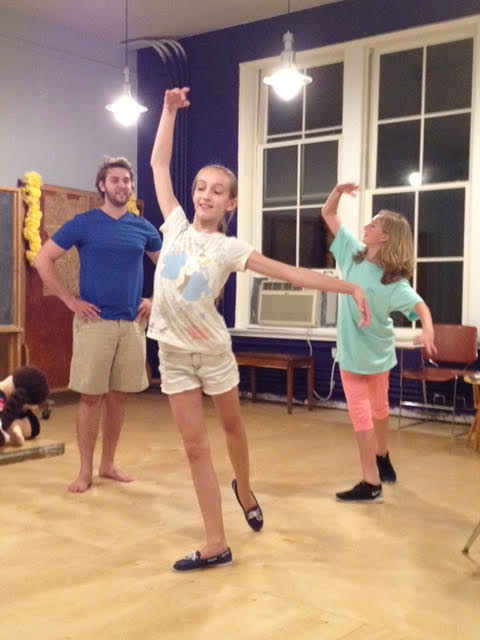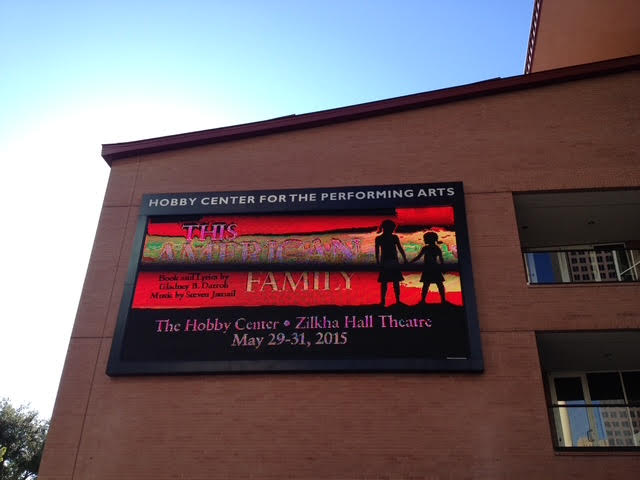The Power of Storytelling
Stories have always mattered to me. Long before I became a recruiter, before I was an entrepreneur or a philanthropist, I was a kid who loved to listen and imagine and read. Always an avid reader, I believed in the transformative power reading stories had—to move people, to teach lessons, to change hearts, to heal hurts, to inspire hope. Often, I felt its power.
This belief only strengthened as I grew older. In time, writing became an aspiration of mine.
I majored in English and Creative Writing before switching to Economics my junior year in college. Still, I never lost interest in writing (principally plays) and the ability of a good story to make a meaningful difference. “One day, one day. . .” was a belief I always harbored.
This American Family was born years later. It was created out of life experience and an intensely personal desire to use the stage to honor, to help, and to heal.
This play was also created to provide prominent roles for women on stage whose characters are emotionally strong – women who are smart, confident, independent, and successful. Characters who triumph over cruelty and hardship with unshakeable core values centered on family and faith. In other words, the kind of roles for women that had been sorely lacking in the theater for the past 100 years.

Where the Idea Came From
In 2008, after the cottage for little girls I’d built at Today’s Harbor for Children was completed and occupied, I met a middle-aged, Hispanic couple who had come to pick up a child to spend the weekend with their family. The Harbor allowed “approved parents” like this couple to sponsor children in their homes on special weekends and holidays.
Over time, I got to know them quite well. I learned they had lost their only son, a Marine, in the Afghanistan war. Their daughter, two years younger than their son, was a school teacher. The mother was a member of American Gold Star Mothers, which is how I first learned about this incredible organization. The father had never reconciled his son’s death.
The idea for This American Family was born from my experience with people like this Hispanic couple who, despite the horrific loss of their only son, nevertheless in their hearts nourished the compassion, kindness, and calling to offer love and affection for a needy child. They were true Americans.
In addition to my own decades of experience in philanthropic work, the story’s inspirational foundation was based on strong, diverse women of character and faith. The kinds of women who had shaped my life: my mother and grandmother, my school teachers, colleagues, and the countless phenomenal women I’d met through work and community service. These weren’t one-dimensional characters. They were complicated. Real. Exceptionally smart and talented. Full of conviction, grace, humor, and grit.
The composites of these women became the characters in the play. All of them, including the two little girls, are outstanding role models. No doubt this accounts for why mothers who attended the play one night returned with their daughters for the next performance.
It’s interesting to know that This American Family was first a novel, “Women of Uncommon Strength”, which I began writing in the evenings in 2008 and completed in 2012. Oddly enough, “Women of Uncommon Strength” was first and always intended to be the play it became. The reason for this roundabout journey was to put myself through an intense, immersive writing process, an exercise which I hoped would be teaching me (forcing me) to become a better writer along the way. It was grueling, exasperating, and humbling. Somewhat successful.
When the book came out on Amazon – even with all of its faults (there were many) – it still did well enough to convince me the story could be successful on stage. So, I began the tedious process of adapting the story to the theater. This entailed reducing a 112,000 word novel to a 12,000 word script. Characters were tossed aside, whole chapters chopped, dialogue slashed – it was heartrending, but totally necessary. Twelve months later I finished. Of course, a script is never really finished. It just reaches a point where it’s finished enough.
What Surprised Me the Most
What surprised me the most when adapting the novel to the play is when I realized the stage drama was meant to be a musical drama – in fact, the characters insisted on it. This may sound strange, but any writer will tell you that characters begin developing voices of their own and telling you, the author, what they intend to do next. When this starts they are frequently irritating, loud, and unrelenting. Mine wouldn’t quiet down until I included original songs and a few dance numbers. Turns out, they were right.
What Happened Next
I partnered with a talented composer in New York, a director, choreographer and musicians—all of them with good experience on Broadway. The music was original, the cast of local actors was exceptional, and the message was clear: this was a story about us. About the spirit of diverse, everyday Americans who rise above hardship with faith and family as their foundation. Bringing it to the stage was a lot of work and some of the greatest fun I’ve ever had.
This American Family premiered in May 2015 at Houston’s Hobby Center for the Performing Arts. It was one of the most emotional nights of my life. The audience cheered.
* The complete score for This American Family can be accessed via desktop by going to my LinkedIn page. There, under my photo, click “Contact Info,” and then click SoundCloud.
A Purpose Beyond the Curtain
What made This American Family different from most stage productions is that every performance had a mission beyond art. From the very beginning, I committed 100% of the proceeds to charity.
The play raised over $45,000, all of which was donated to Today’s Harbor for Children, an organization I’ve supported for decades. These funds went directly toward helping children who had been neglected, abused, or abandoned—children who needed safety, structure, and love.
At one of the performances, we invited Gold Star Mothers and First Responders as our honored guests. I’ll never forget the standing ovation they received. It reminded everyone in that theatre that this story—this country—is built on sacrifice, strength, and service.
A Second Run for a Second Cause
Due to popular demand, This American Family returned in 2016 at Queensbury Theatre. This time, our purpose expanded. In addition to supporting children, the proceeds went toward breast cancer research at Baylor College of Medicine—a cause close to many hearts in our community.
That run felt just as special, if not more so, because we were now telling stories that touched people in entirely new ways. Women and their daughters in the audience told us they saw themselves on stage. Men said they saw their mothers and grandmothers. Young people walked away thinking differently about faith, strength, and identity.
Most meaningful to me, Baylor College of Medicine for Breast Cancer Research had set up information tables where mothers and daughters lined up before the performance, during intermission, and after the play to learn more about the critical importance of early screening and detection. Seeing them at these tables is when I knew the play had achieved something beyond my greatest hopes.
That’s the magic of theatre when it’s done right. It reflects truth back to us—and invites us to act on it.
Why It Mattered
People ask me why I took the years of effort to create this play. My answer is simple: because stories heal. And healing is something we all need.
In a world that can feel divided, stories like This American Family remind us what we have in common. Faith. Struggle. Resilience. Hope. And a longing to be part of something bigger than ourselves.
Creating this play helped me rediscover parts of myself—my creativity, my appreciation for the arts, and my belief that purpose can find you at any point in life – if you’re open to it.
Looking Ahead
This American Family was more than a play. It was a mission. And while the curtain has closed for now, I believe its message continues—through the children who were helped, the heroes who were honored, and the audiences who were moved.
I’m working now to turn This American Family into a television presentation. Because sometimes, the best way to serve is not through a job or a title—but through a story well told.
I’m optimistic. Stay tuned.
